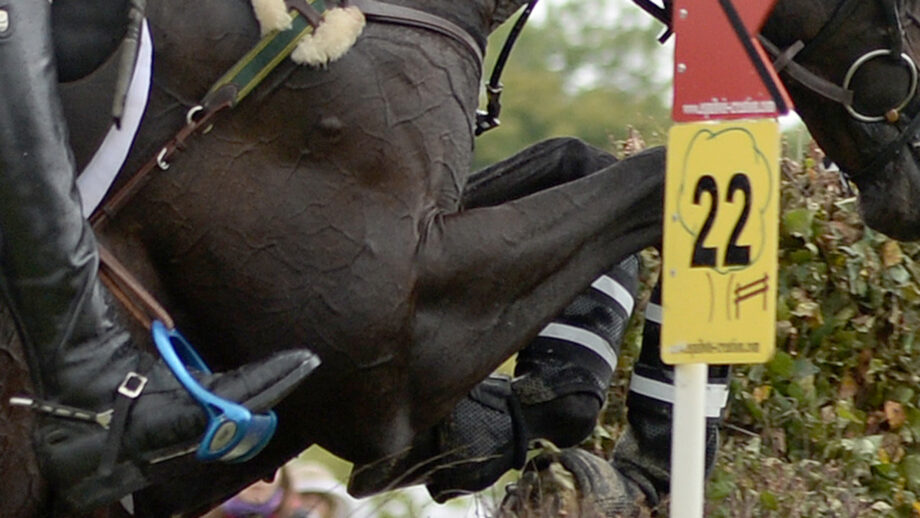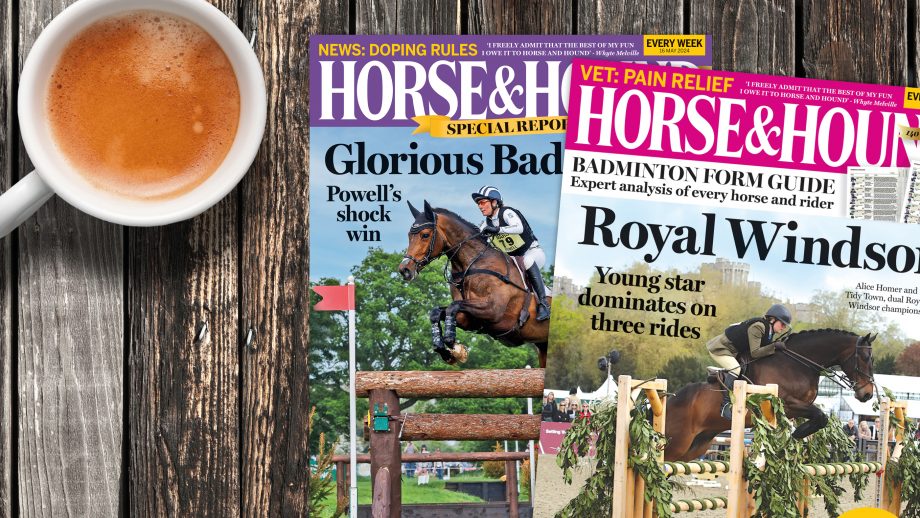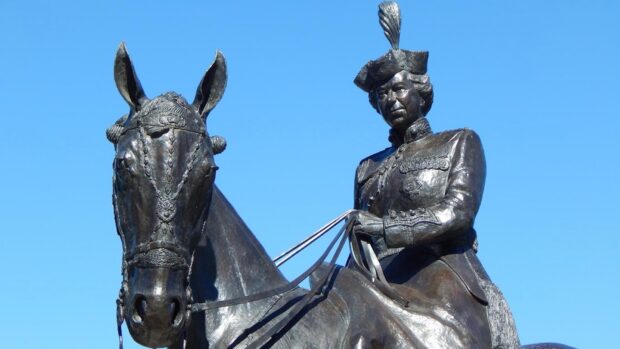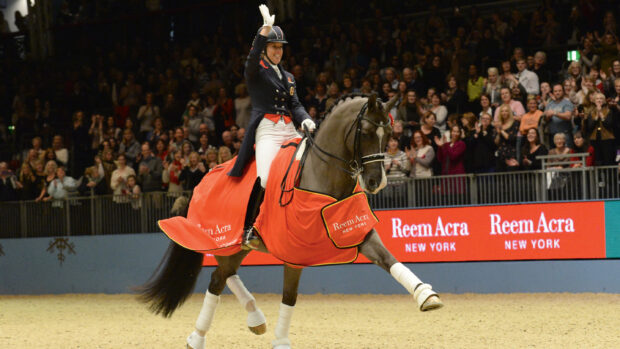Is dressage facing a crisis? Aside from welfare concerns, falling spectator numbers, shifting competitor habits, and rising organisational costs have forced several shows to close their gates. And it’s not just a British problem – international fixtures, such as Compiègne CDIO, are dropping off the calendar for 2026.
Participation is also shrinking. British Dressage (BD) membership has fallen 2.1% since January, and attendance at flagship events like the LeMieux National Championships has dipped too – prompting Pammy Hutton to lament its “lacklustre atmosphere” in her latest H&H column.
The challenge is working out what’s to blame – how competitions are run, or the squeeze of the cost-of-living crisis – and how dressage can reconnect with fans.
Rising overheads are making events harder to sustain
Online, two of the main complaints about the recent nationals were ticket prices – £30 for a day ticket, the same as in 2024, with student discounts and free entry for under-15s – and the limited number of trade stands. But BD chief executive Jason Brautigam says these issues reflect wider post-pandemic pressures across sport and culture.
“Since we moved from Stoneleigh in 2019, inflation alone has gone up by 29.2%, but we have seen our overheads increase by a much greater amount,” he explains. “The cost of hiring temporary grandstands alone has gone up by 300% in just six years.
“It is very expensive to bring in infrastructure onto a greenfield site without permanent facilities, from marquee and stable hire to generators and toilets.
“As a result, the event is now heavily subsidised. We do try to keep the cost of tickets to a minimum to maintain attendance, but we have to finance these facilities for spectators and competitors alike.”
In 2024, the nationals were reported to be running at an average annual loss of around £30,000 – a figure that highlights the uphill battle faced by privately funded or less-subsidised fixtures.
“In an ideal world, we would love to have more trade stands,” Mr Brautigam adds. “But again, the commercial reality is that the nature of the market has changed; there are fewer equestrian retailers now compared to pre-pandemic, and the business model has now changed to one where businesses sell to consumers direct online, rather than by attending events.”
He also pointed to changing spectator habits, with so much equestrian sport now available to watch live or on demand online. Even so, he doesn’t see this as a sign that dressage itself is losing appeal – membership has risen 30% since June 2020, despite a small dip this year, and flagship events like the London International Horse Show continue to draw strong crowds.
But with little prospect of major financial change in the near future, the question is what the sport can do in the meantime to give spectators and competitors better value – and re-ignite their enthusiasm for dressage.
“Freestyle is the one real growth area”
From an entertainment perspective, one of the most transformative innovations in modern dressage has been the freestyle. Originating in the 1980s and introduced to the Olympics at Atlanta in 1996, it was first met with some scepticism – but it’s now the sport’s biggest crowd-puller.
The FEI World Cup series, among the best-attended dressage events on the circuit, centres its competition around the freestyle, with the grand prix serving as a low-stakes qualifier.
Online, the discipline’s most-watched moments are all freestyle tests: Lottie Fry and Glamourdale’s 2022 World Championship-winning ride has more than 2.2 million views on YouTube; Charlotte Dujardin and Valegro’s 2015 world record freestyle from Olympia has 4.7 million (see below); Edward Gal and Totilas’ Windsor test tops 6 million across uploads; and Andreas Helgstrand’s 2006 WEG performance with Blue Hors Matinee has nearly 30 million views.
Freestyle may be the most crowd-pleasing part of dressage, but organisers at the national level are struggling to keep up. Kelly Jewell, who co-runs the freestyle producers Equidance, says many British venues are still relying on CDs to play riders’ music – something she calls “ridiculous, frankly, because it’s unreliable”.
“I’ve been to so many competitions where the CD player won’t work, or the disc skips or is scratched – and most people don’t even have a way to check their CDs play anymore,” she explains. “Everywhere else it’s MP3. The only country that still wants CDs is ours.”
She believes the issue isn’t cost but communication.
“Most systems can plug and play with MP3s or run from a laptop,” she says. “It’s not expensive – we even offer help for free – but there’s a lack of education and no one driving it.”
As part of BD’s designated funds initiative, which reinvests reserves to support the development of the sport in key areas, money is set aside for music system upgrades at venues – suggesting the funding and appetite for progress are there, but perhaps what’s needed now is clearer direction.
“Freestyle is the one real growth area of dressage,” Kelly adds. “Premier Leagues are down, High Profile shows are down, but freestyle is booming. It’s the part of the sport they should be investing in.”
What gymnastics can teach us about the future of dressage
Beyond simply adding more freestyle classes, dressage could take inspiration from other sports in finding new ways to captivate spectators – tapping into the same energy that made those viral freestyles so memorable.
One striking example comes from the NCAA women’s gymnastics scene in the US, where artistic floor routines have evolved from purely technical exercises into more of a performance art. That shift transformed the sport’s popularity, making it more entertaining and relatable, with athletes such as Katelyn Ohashi and Margzetta Frazier drawing tens – even hundreds – of millions of views online.
In the 1980s and 90s, NCAA gymnastics faced a similar challenge to dressage today: routines were technically brilliant but often inaccessible to more casual audiences. Over time, the rules shifted focus away from pure technical difficulty, reducing compulsory elements and rewarding creativity, expression and storytelling, encouraging gymnasts to connect with spectators rather than simply impress judges. The result was a new generation of routines set to pop, hip-hop and movie soundtracks – performances that felt athletic but also personal.
Crucially, although it differs from the floor routines you see in the Olympics, the sport didn’t lose its integrity. Difficulty scores still matter, but they now sit alongside artistry and presentation. That balance has helped gymnastics bridge the gap between sport and entertainment – something dressage, with its musical foundations, is arguably as well placed to emulate.
By contrast, dressage freestyles are weighted 50/50 between technical execution and artistic impression, with 200 marks available for each. But when you consider that collective marks for rhythm, energy, elasticity, and harmony between horse and rider all sit within the artistic category, the real balance is closer to 70/30 in favour of technicality.
Shifting that balance – placing greater emphasis on musical interpretation and choreography, and relaxing restrictions on compulsory movements, perhaps even reducing the length of tests – could encourage riders to take more creative risks and produce freestyles that connect more powerfully with audiences. That kind of innovation fits the moment too, where TikTok and trending audios shape how people engage with the world.
How grassroots organisers are reimagining the future of dressage competition
Additionally, demos have long shown their pulling power – BD’s own national conventions were always well attended – so combining them with competitions could help bring more people through the gates. Grassroots organisers are already proving how effective that approach can be.

Carl Hester during Dressage Unwrapped at the 2022 London International Horse Show. Credit: Peter Nixon
At the unaffiliated Aintree Cooke Coachbuilders Carnival of Dressage, organiser Katie Amos has built an event that blends competition, community and entertainment – and it’s paying off.
“I run a training camp beforehand so people can come for two and a half days, train in the competition arenas, and then stay for the show,” she says. “It encourages them to stable overnight and creates more of a community feel on the showground.”
The gala-night demo in 2025 sold out 265 tickets, and featured how-to advice on freestyles from Equidance, and top riders like the then national champion Lewis Robertson-Carrier and Becky Moody, who rode Jagerbomb.
“We didn’t even announce what horse Becky was bringing, and it still sold out,” Katie adds.
With lead-rein classes, family-friendly awards, and a focus on fun, her formula shows that creating experiences around the sport – not just within it – can help keep both riders and spectators coming back.
By comparison, demonstrations at the nationals are typically short – often around 30 minutes between classes – which makes them harder to build into the wider spectator experience.
The future of dressage depends on connection – not just competition
British Dressage already does many things well, from supporting grassroots riders to keeping longstanding traditions like Radio Nationals alive, and much of what’s discussed here is simply a snapshot of ideas rather than an exhaustive list.
There’s still plenty more that could be explored without dramatically increasing overheads – from leaning into spectator interest in young horse classes and promoting the sport’s personalities, to adding post-test commentary from judges, improving live coverage, relaxing traditional dress codes, and allowing non-rights holders to share content from FEI-named events.
But there remains a clear need for the sport to evolve. The challenges facing dressage are complex, even before considering issues such as welfare and social licence – and there’s a lot to be said about NCAA gymnastics’ new appeal being down to its celebrating the “happy athlete” – yet every small improvement in presentation, participation, or perception can make a difference.
We’d love to hear your thoughts. What do you think could help make dressage more engaging and enjoyable for riders and spectators alike? Write in and share your ideas at hhletters@futurenet.com including your name, nearest town and country for the chance to have your views published in a future issue of Horse & Hound magazine.
- To stay up to date with all the breaking news throughout London International and more, subscribe to the Horse & Hound website
You may also be interested in:

Rules on horse abuse, blood, flag penalties and double bridles to be voted on next month

427 eliminations, 84 welfare-related: British Dressage reveals first welfare statistics and outlines next steps for change

‘The equestrian world needs its own Jeremy Clarkson,’ says Pammy Hutton

Subscribe to Horse & Hound magazine today – and enjoy unlimited website access all year round






